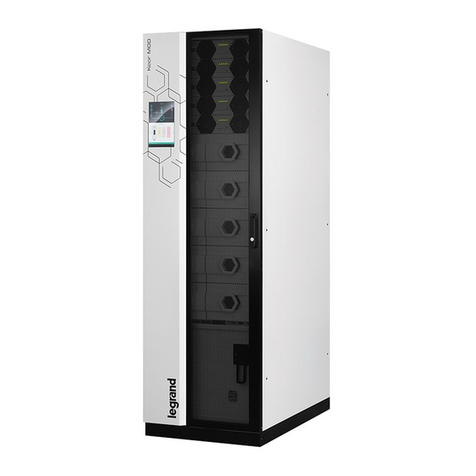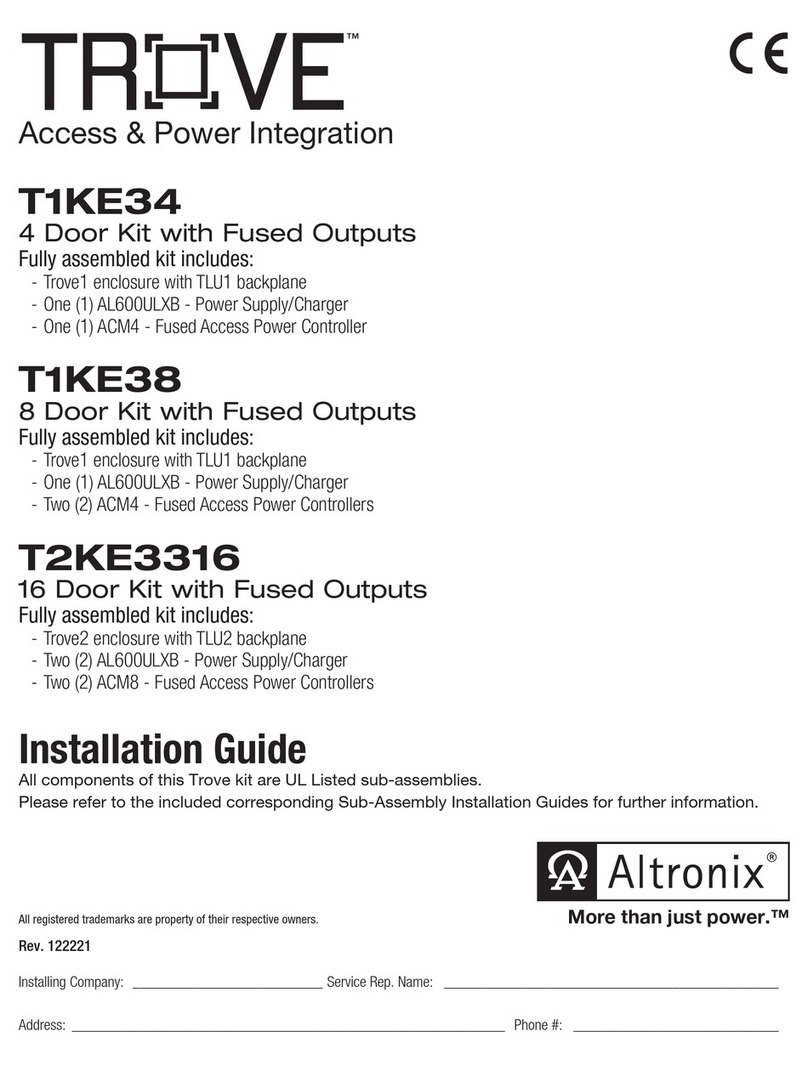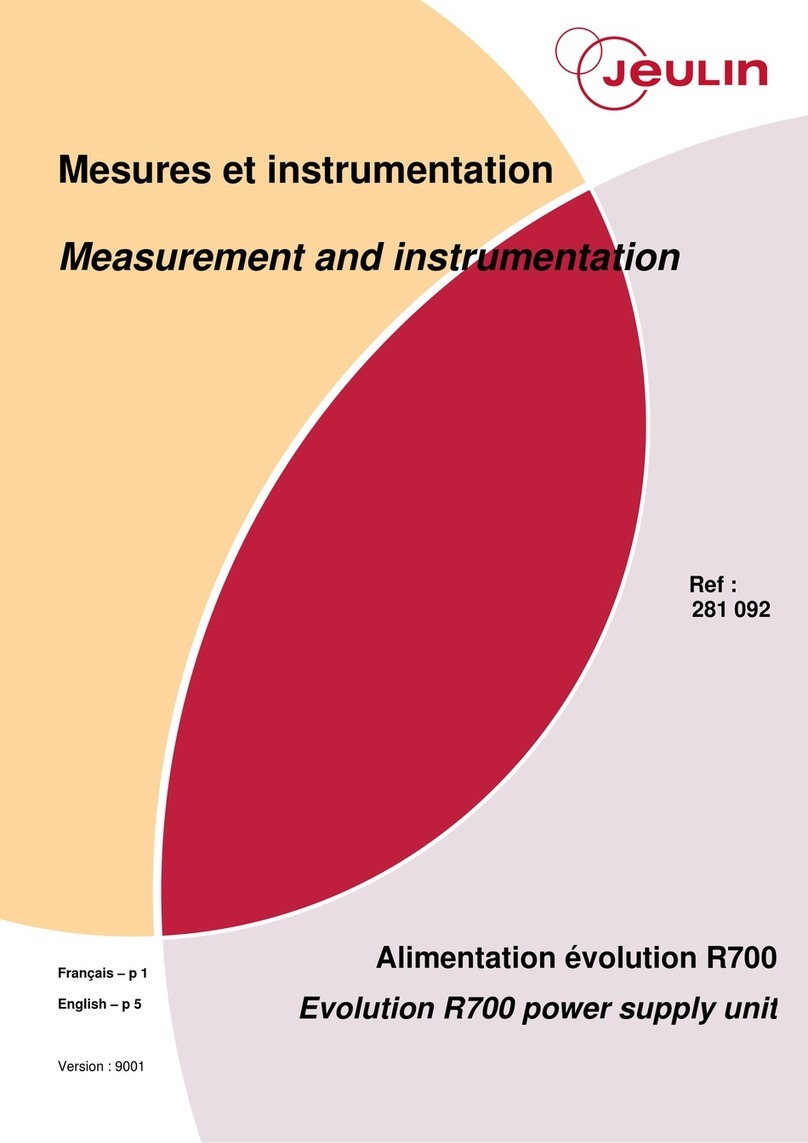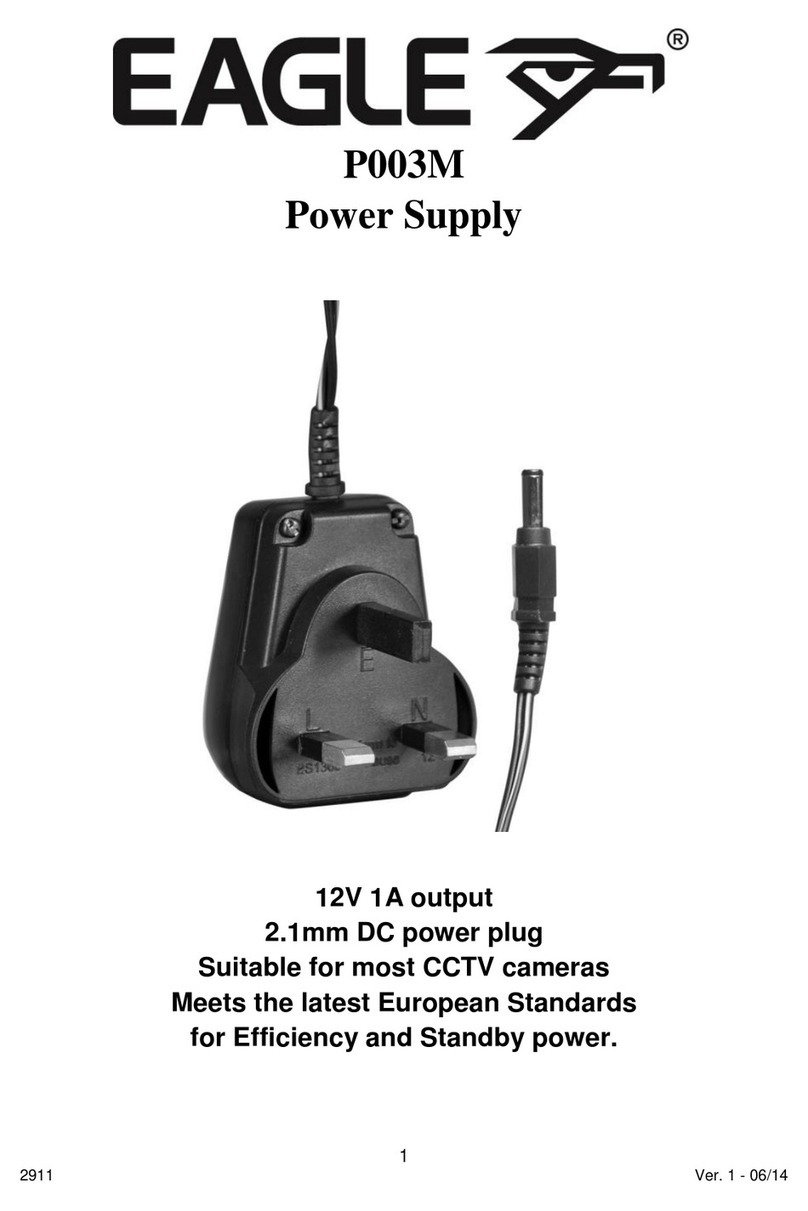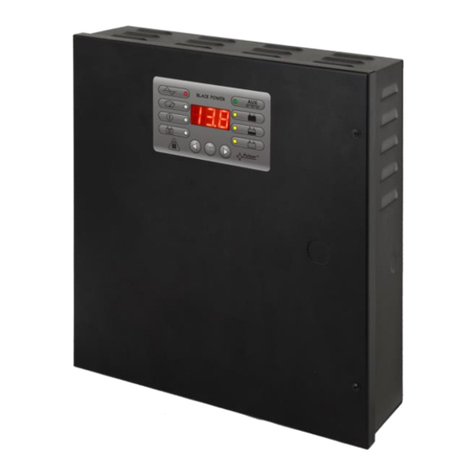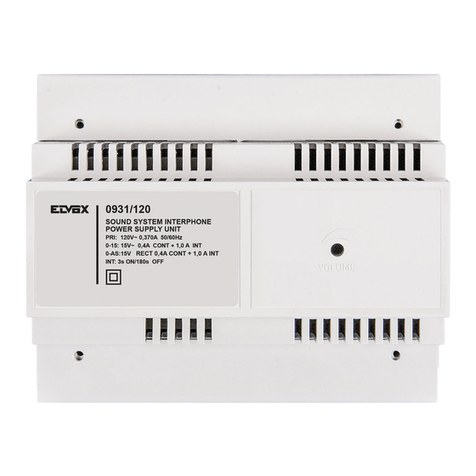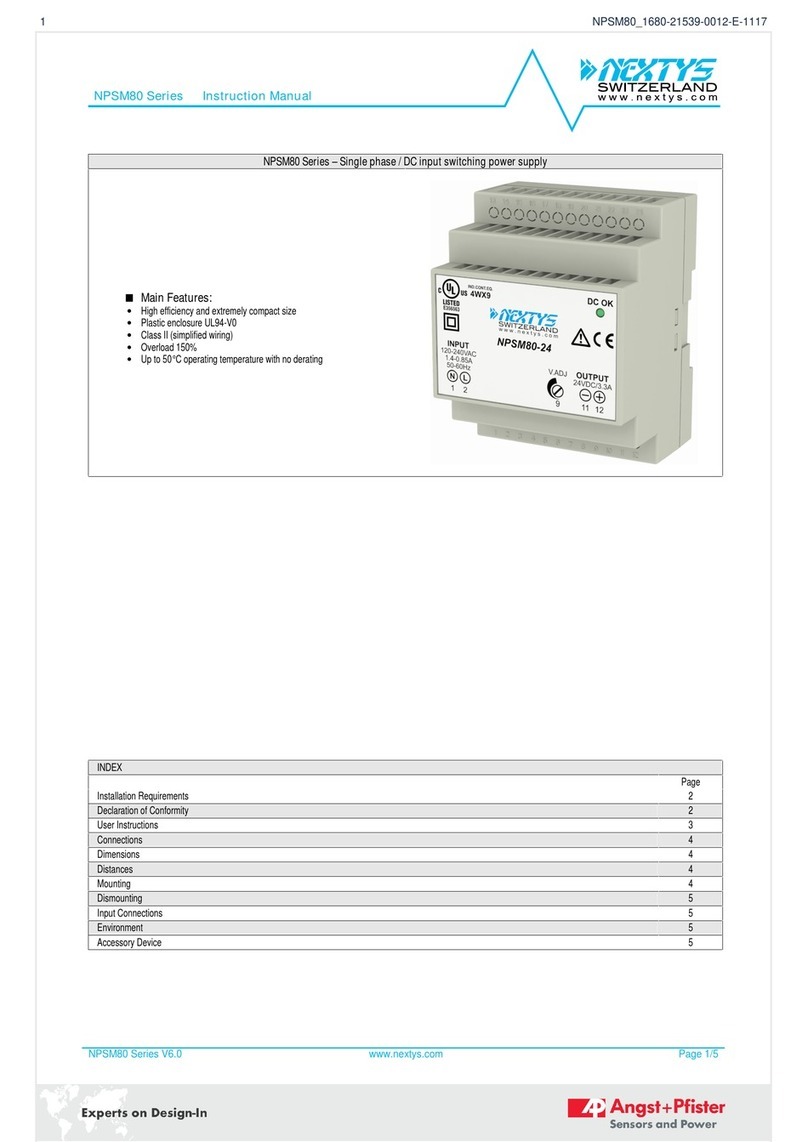eta plus ELC N12 Guide

UV-
TECHNOLOGY
Technical Documentation
ELC
®
N12 - ELC
®
N32 /
ELC
®
NE12 - ELC
®
NE32 /
ELC
®
NE12D - ELC
®
NE32D
GB
eta plus electronic gmbh
Lauterstraße 29, D-72622 Nürtingen, Telefon +49 (0) 70 22 - 60 02-80, Fax +49 (0) 70 22 – 6 58 54
Postfach 1411, D-72604 Nürtingen, e-mail: info@eta-uv.de
––––––––––––––––––––––––––––
Eingetragen unter HRB 724321 AG Stuttgart, USt.-Id.-Nr. DE 146267800
Geschäftsführer: Dr. Peter Schwarz-Kiene
our name is our principle
eta plus electronic gmbh
Lauterstraße 29, 72622 Nürtingen, Telefon +49 7022 6002-80, Fax +49 7022 65854, E-mail: info@eta-uv.de, www.eta-uv.de
Eingetragen unter HRB 724321 AG Stuttgart, USt.-Id.-Nr. DE 146267800, Geschäftsleitung: Uwe Uhlemann, Dr. Markus Roth

ELC N12-N32_NE12-NE32_NE12D-NE32D-V1.0-03.17-GB Subject to technical alterations
ELC®(„Electronic Lamp Control“) is a registered trademark of
IST Metz GmbH.

Safety page 1
ELC N12-N32_NE12-NE32_NE12D-NE32D-V1.0-03.17-GB Subject to technical alterations
Contents
1 Safety................................................................................................ 3
1.1 Definition of Symbols.................................................................................3
1.2 Safety Advice ..............................................................................................3
1.3 Correct operation........................................................................................4
1.4 Extended use ..............................................................................................4
2 Description of functions.................................................................. 5
3 Installation........................................................................................ 6
3.1 Mounting of casing.....................................................................................6
3.1.1 Installation position N12, N16, NE12, NE16, NE12D, NE16D........................7
3.1.2 Installation position N22, N32, NE22, NE32, NE22D, NE32D........................9
3.2 Connection ................................................................................................11
3.3 Control current connections....................................................................16
3.3.1 Series N12 – N32 and NE12 – NE32...........................................................16
3.3.2 Series NE12D – NE32D ..............................................................................16
3.4 Explanations of the control functions for ELC.......................................18
3.4.1 Release relay ..............................................................................................18
3.4.2 Control input START ...................................................................................18
3.4.3 Setting lamp power......................................................................................18
3.4.4 Table: lamp power.......................................................................................19
3.4.5 Earth fault control ........................................................................................20
4 Operation of ELC ........................................................................... 22
4.1 Initial operation .........................................................................................22
4.2 Switching on the ELC...............................................................................22
4.3 Switching on the lamp..............................................................................22
4.4 Dimming Operation ..................................................................................23
4.5 Standby Operation....................................................................................23
4.6 Switching off the Lamp ............................................................................23
5 Troubleshooting ............................................................................ 24
5.1 Repair of ELC ............................................................................................24

Safety page 2
ELC N12-N32_NE12-NE32_NE12D-NE32D-V1.0-03.17-GB Subject to technical alterations
6 Technical Data ............................................................................... 25
6.1 General data ELC......................................................................................25
6.2 Type specific data NE12D/NE16D/NE22D/NE32D (nominal
values) .......................................................................................................26
6.3 Type specific data NE12/NE16/NE22/NE32 (nominal values)................28
6.4 Type specific data N12/N16/N22/N32 (nominal values) .........................30

Safety page 3
ELC N12-N32_NE12-NE32_NE12D-NE32D-V1.0-03.17-GB Subject to technical alterations
1 Safety
1.1 Definition of Symbols
Stop (Stop Danger). This symbol warns of serious danger of severe injury to
persons. It must be strictly observed.
Attention (Warning). This symbol indicates information the non-observance of
which can lead to extensive damage to property. The safety warning must be
strictly observed.
Information. This symbol indicates key information on use. Non-observance can
lead to failure.
1.2 Safety Advice
The ELC must be installed and connected in compliance with existing regulations
and practices. This is e.g. EN 60204-1 in Europe.
Repairs on the ELC may only be carried out by the manufacturer.
The installation and starting up may only be carried out by skilled electricians.
Do not open the ELC before it is disconnected from the mains. BEWARE OF
RESIDUAL VOLTAGE! The unit may still be live up to three minutes after it has
been switched off.
☞

Safety page 4
ELC N12-N32_NE12-NE32_NE12D-NE32D-V1.0-03.17-GB Subject to technical alterations
The ELC causes a leakage current greater than 3.5 mA!
Safeguarding by means of leakage current protection type A and type AC
according to IEC 60755 is not permitted!
The ELC operates in principle as a frequency converter and is equipped with a
mains filter whose leakage current could activate fuse protection.
Contact to the grounding connector must always be ensured.
Additional measures must be taken to ensure that
there is no danger when
touching the appliance. This could be by means of a universal leakage current
protection type B, taking into consideration the increased response threshold, or
by means of an independent equipotential connection
1.3 Correct operation
The ELC is an electrical unit intended to be installed in the switch cabinets of
industrial high-voltage power installations. It is conceived as an electronic ballast
for the operation of lamps intended for this purpose.
Any other use is deemed as misuse. The manufacturer will not assume liability for
damage resulting from misuse.
A pre-requisite for authorised operation of the ELC is the observance of both the
operating and maintenance instructions and the safety advice.
1.4 Extended use
Extended use beyond the operating specifications as stated is not permitted.
The manufacturer will not assume liability if the equipment is used in any other
way. The operator acts at his own risk.
Any operation beyond the scope of the authorised operation is considered to be
misuse.

Description of functions page 5
ELC N12-N32_NE12-NE32_NE12D-NE32D-V1.0-03.17-GB Subject to technical alterations
2 Description of functions
The ELC is an electronic power supply unit for the operation of gas discharge lamps with
electrical properties as described in chapter 6.
In contrast to conventional ballasts (inductive lamp ballast or transformer or transformer with
transductor), the lamp with an electronic ballast is operated with high frequency (approx.
100 kHz). The lamp does not flicker and dimming is infinitely adjustable to a range between
20 % and 100 % of the electric power or to between 15 % and 100 % of the UV radiation
respectively.
Dimming
The possibility of dimming the lamp has two advantages. Firstly the lamp can be switched to
minimum load (standby operation) during longer idle times and energy can thus be saved.
Secondly the optimum lamp power can be determined and adjusted as appropriate.
Power control
The ELC offers a high level of lamp power constancy due to its integrated power control.
Variations in operating voltage of ±10 % do not affect lamp power.
Ignition device
When the lamp is switched on the ELC initiates trigger pulses to fire the lamp; a separate
ignition device is not required.
Other performance characteristics
•High level of electrical efficiency.
•The potential-free control inputs allow various lamp conditions such as maximum lamp
power, dimming or standby to be set.
•The digital control inputs are designed for control voltages of between 10 and 30 V AC or
DC. Therefore ELC can be easily integrated into the installation’s electric system.
•Lamp current and lamp power are continuously recorded and output as analogous
0-10 V signals.
•The ELC monitors the lamp cables for earth fault.
•The lamp output potential is separated from that of the supply voltage.
•The ELC is both short-circuit proof and safe in open circuit operation at the lamp output.

Installation page 6
ELC N12-N32_NE12-NE32_NE12D-NE32D-V1.0-03.17-GB Subject to technical alterations
3 Installation
3.1 Mounting of casing
The ELC must be installed in a control cabinet with at least IP 54 protection (see
EN
60529). Operation without a control cabinet or in a control cabinet with a lower
degree of protection is not permitted.
It is only permitted to install the appliance in the positions described in 3.1.1 or
3.1.2. When installed vertically, as described in 3.1.1 or 3.1.2, the control
connections must be positioned at the bottom and supply connections at the top.
Installation must allow for the minimum spacing.
The ELC should not be mounted in the immediate proximity of sensitive electronic
equipment.
An appropriate distance must be maintained to scatter field
transformers or other inductors.
The flow of cool air for the ELC must be safeguarded. The ambient temperature
must not exceed the values prescribed in chapter 6.
Ventilation must be provided for the switch cabinet.
The amount of air necessary is determined by the size and positioning of the
switch cabinet, the total electrical losses and the external temperature. Please
consult your switch cabinet manufacturer. For the recommended throughput of air
please see the technical data in chapter 6.
Impure cooling air could affect the functionality of the ELC. This can be avoided
by installing a fine air filter.

Installation page 7
ELC N12-N32_NE12-NE32_NE12D-NE32D-V1.0-03.17-GB Subject to technical alterations
3.1.1 Installation position N12, N16, NE12, NE16, NE12D, NE16D
Vertical installation position
Fig. 1: Assembly of the ELC 12-16kW, vertical installation position (all dimensions in mm).
501 mm
min. 150
540 mm
31 mm 31 mm
650 mm
200 mm
Oben
top
min. 150
261 mm
263,5 mm
control connector
Lampenstecker
lampconnection
Netzanschluß
line input
Luftaustritt
air exhaust
Steckerleiste für Steuersignale
Lufteintritt
air entrance

Installation page 8
ELC N12-N32_NE12-NE32_NE12D-NE32D-V1.0-03.17-GB Subject to technical alterations
Horizontal installation position
Fig. 2: Assembly of the ELC 12-16kW, horizontal installation position (all dimensions in mm).
Steckerleiste für Steuersignale
501 mm
min. 150
650 mm
min. 150
263,5 mm
261 mm
control connector

Installation page 9
ELC N12-N32_NE12-NE32_NE12D-NE32D-V1.0-03.17-GB Subject to technical alterations
3.1.2 Installation position N22, N32, NE22, NE32, NE22D, NE32D
Vertical installation position
Fig. 3: Assembly of the ELC 22-32kW, vertical installation position (all dimensions in mm).
501 mm
min. 150
540 mm
31 mm 31 mm
650 mm
200 mm
Oben
top
min. 150
261 mm
control connector
Lampenstecker
lampconnection
Netzanschluß
line input
Luftaustritt
air exhaust
Steckerleiste für Steuersignale
Lufteintritt
air entrance
484 mm
Lufteintritt
air entrance
Luftaustritt
air exhaust

Installation page 10
ELC N12-N32_NE12-NE32_NE12D-NE32D-V1.0-03.17-GB Subject to technical alterations
Horizontal installation position
Fig. 4: Assembly of the ELC 22-32kW, horizontal installation position (all dimensions in mm).
501 mm
min. 150
650 mm
min. 150
261 mm
control connector
Steckerleiste für Steuersignale
Lufteintritt
air entrance
484 mm
Lufteintritt
air entrance

Installation page 11
ELC N12-N32_NE12-NE32_NE12D-NE32D-V1.0-03.17-GB Subject to technical alterations
3.2 Connection
L3
out1
L1 L2
L1
L2
L3
N
PE
out2
earthed lead network side
automatic cutout
cable shield
lamp feeder cable
lamp assembly
ELC
Fig. 5: Power connection N12 - N32
L3
out1
L1 L2
L1
L2
L3
N
PE
out2
earthed lead network side
automatic cutout
cable shield
lamp feeder cable
lamp assembly
ELC
power choke
Fig. 6: Power connection NE12 – NE32
Power connection NE12D – NE32D
Fig. 5 and Fig. 6 show the respective electrical installation. Operation of appliances type
NE12-NE32 / NE12D-NE32D requires a power choke in series (see technical data chapter 6).
These appliances are implemented where the mains supply shows a low fault level or high
supply impedance.
The lamp feeder cable shielding must be connected to the ELC. To this end the connector
has an EMC screw connection (also see: connection lamp feeder cable).
If wished, the shielding can also be connected to the lamp unit.
The connection of mains supply cables and lamp feeder cables must be
separated from control cables.
For the mains power supply quality standards in accordance with EN 50160
(mains frequency, voltage drops, transients etc.) are pre-requisite.
ELCs of type “N” (N12/N16) are not designed for operation on high impedance
mains. Therefore the one-phase short-circuit power at the supply point must be
20 times higher than the nominal power of the UV installation or than the sum of
the nominal power of all electronic loads in the same arm.

Installation page 12
ELC N12-N32_NE12-NE32_NE12D-NE32D-V1.0-03.17-GB Subject to technical alterations
Mains connection
The cross section of the earthed wire must be at least 10 mm².
The three phases must be provided with an automatic cutout.
In order to avoid damaging the terminal pins, please do not exceed the
following torque:
N12 / N16, NE12 / NE16, NE12D /
NE16D, N22 / NE22 / NE22D:
•L1, L2, L3: 1.5 – 1.8Nm
•Grounding conductor: 3.0 – 4.0Nm
N32 / NE32 / NE32D:
•L1, L2, L3: 1.5 – 1.8Nm
•Grounding conductor:1.5 – 1.8Nm
☞

Installation page 13
ELC N12-N32_NE12-NE32_NE12D-NE32D-V1.0-03.17-GB Subject to technical alterations
Connecting the lamp feeder cable
The lamp feeder cable must correspond with the cable parameters described in
chapter 6.
Components of the connector:
connector module
hood
crimp contacts
EMC cable gland with
plastic insert
Preparing the lamp feeder cable:
•Remove sheath
•Free metal braid and put over cable
sheath
•Dismantle conductor
(measurements in mm)
A suitable contact crimping tool is required of
the type:
Amphenol group C146
Part No.: VN01 025 0029 1C
Closed crimp barrels (individual contacts)
2.5 mm
☞
7,5
100
12

Installation page 14
ELC N12-N32_NE12-NE32_NE12D-NE32D-V1.0-03.17-GB Subject to technical alterations
Top: Correct crimp connection
Middle: Stripped part of the wire too long, gap
between insulation and crimp barrel too large
Bottom: Stripped part of the wire too short
because conductor is not visible through
inspection hole.
•Insert cable into the cable gland and bush
casing
•Insert crimp contacts into the connector
module until they lock into place
•Ensure that the shield evenly covers the
plastic inset of the cable gland (360°
contact)
•Tighten EMC cable gland

Installation page 15
ELC N12-N32_NE12-NE32_NE12D-NE32D-V1.0-03.17-GB Subject to technical alterations
•Screw the module into the hood casing.
The picture on the left shows the
recommended orientation.
The lamp feeder cable between the switch cabinet and lamp assembly must be laid protected.
For the correct installation of the lamp assembly and lamp please observe the corresponding
manufacturer’s instructions.

Installation page 16
ELC N12-N32_NE12-NE32_NE12D-NE32D-V1.0-03.17-GB Subject to technical alterations
3.3 Control current connections
3.3.1 Series N12 – N32 and NE12 – NE32
The connector for the control connection is
to be plugged into the plug strip marked
Control. (Fig. 7)
The plug strip marked "n.c.” serves no
function.
The pin assignment is shown in Fig. 9 and
Table 1.
All control circuits must be earthed upon
installation.
3.3.2 Series NE12D – NE32D
The connector for the control connection is to
be plugged into the plug strip marked Control.
(Fig. 8)
The plug strip marked with “Service” is for
internal purposes.
The pin assignment is shown in Fig. 9 and
Table 1.
All control circuits must be earthed upon
installation.
Fig. 7 Control current connections N, NE-Series
Fig. 8 Control current connections NExxD Series
Fig. 7: Control current connections N, NE-Series
Fig. 8: Control current connections NExxD-
Series

Installation page 17
ELC N12-N32_NE12-NE32_NE12D-NE32D-V1.0-03.17-GB Subject to technical alterations
Pin assignment
Fig. 9: Pin plug for control of ELC
Designation Pin No. Description
Start1 1 digital control input
START
15 - 30 V DC, between Pin 1 and Pin 20 input
impedance = 1 kΩ
potential-free, active high
Start2 20
Max1 2 digital control input
MAX
15 - 30 V AC / DC, between Pin 2 and Pin 19
input impedance = 1 kΩ
potential-free, active high
Max2 19
Min1 3 digital control input
MIN
15 - 30 V AC / DC, between Pin 3 and Pin 18
input impedance = 1 kΩ
potential-free, active high
Min2 18
+ 10 V DC 4 control voltage for set value potentiometer 5 kΩto 10 kΩ
max. 10 mA
0-10V 5 analogous control input
SET VALUE *
set voltage between Pin 5 (0 –10 V) and
Pin 16,17 (GND),
input impedance > 200 kΩ(N12-N32, NE12-NE32)
input impedance > 13 kΩ(NE12D-NE32D)
GND 16, 17 control GND**
P-Lamp 6
analogous output
0-10 V DC / 1 mA, Reference: GND
1 V ≅1 kW appliance series up to 10 kW
1 V ≅4 kW appliance series above 12 kW
GND 15 PL (lamp output) control GND**
I-Lamp 7 analogous output 0-10 V DC / 1 mA, (1 V ≅2 A), Reference: GND
GND 14 IL (lamp current) control GND**
ES1 8 Relay earth contact ES
contact, potential-free
up to 30 V AC / DC, max. 0,5 A
Contact between Pin 8 and 13, closed in
operation, opens in the case of fault
ES2 13
OK1 10 RELEASE relay
contact, potential-free
up to 30 V AC / DC, max. 0,5 A
Contact between Pin 10 and 11, closed in
operation, opens in the case of fault
OK2 11
Table 1: Control current connection of ELC
* PWM coupling upon request
** control GND: all pins designated control GND are internally connected and potential-free.
Start1
Start2
Max1 Min1 + 10 V DC 0-10V P-lamp I-lamp ES1 n.c.
Max2 Min2 GND GND GND GND ES2 OK2
START SET VALUEMAX MIN
n.c.
OK1
PL IL RELEASE
12345678910
20 19 18 17 16 15 14 13 12 11
E S

Installation page 18
ELC N12-N32_NE12-NE32_NE12D-NE32D-V1.0-03.17-GB Subject to technical alterations
3.4 Explanations of the control functions for ELC
3.4.1 Release relay
The release relay indicates the trouble-free operation of the unit.
This means that the relay closes when the ELC (see chapter 4.2) is switched on and remains
closed during operation providing there is no defect.
A typical defect would be that the lamp does not fire.
3.4.2 Control input START
High: lamp is on
Low: lamp is off
By applying the High signal the lamp is fired and warms up at maximum current until the desired
power is achieved (see below).
We recommend warm-up at maximum power. After a short time (approx. 2 mins) the full output
has been reached and the lamp power can be varied as desired.
3.4.3 Setting lamp power
Stepless (infinitely variable)
The lamp can be dimmed steplessly from between approx. 20 % to 100 % of the nominal
power. The lamp power is set by applying an analog voltage of between 0 V and 10 V to control
input SET VALUE.
•0 V corresponds to min. power Pmin (20 % of nominal value)
•10 V corresponds to max. power Pmax (100 % of nominal value)
SET VALUE can be controlled manually by means of an external potentiometre.
Fig. 10: Control characteristic
20 %
Lampenleistung
Lamp power
Set value
100%
0 V 10 V
This manual suits for next models
5
Table of contents
